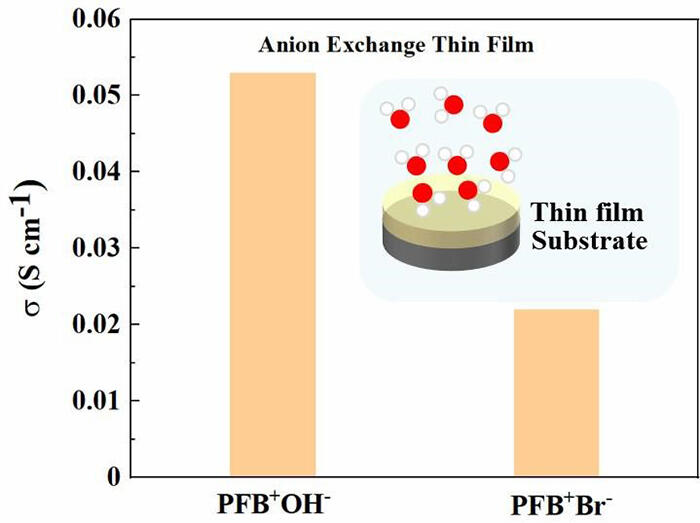A research group comprising Associate Professor Yuki Nagao and graduate students Fangfang Wang and Dongjin Wang of the Department of Materials Chemistry, Graduate School of Advanced Science and Technology, Japan Advanced Institute of Science and Technology, succeeded in establishing a method for the assessment of hydroxide ion conductivity and water content in anion-exchange thin films (an important component of next-generation fuel cells), without the influence of the carbon dioxide in air.
The hydroxide ion conductivity of an anion-exchange thin film around the reaction site in a fuel cell containing an anion-exchange membrane and electrode catalyst has remained a mystery to researchers. Dr. Nagao remarked, "Anion-exchange thin films for hydroxide ions can react with the carbon dioxide in air within seconds to form completely different compounds. It was challenging for us to perform all evaluations in a manner that ensures the samples do not come in contact with air." The research group reduced the thickness of the anion-exchange film, which was synthesized as a model polymer on a substrate and attempted to establish an evaluation method that was not affected by the carbon dioxide in air. The influence of carbon dioxide could be avoided right from the fabrication of the thin film until the complete evaluation of its various physical properties.
The researchers showed that anion-exchange thin films for hydroxide ions (PFB+OH− type) exhibited a relatively high hydroxide ion conductivity of 0.05 S/cm. This was approximately two times higher than the ion conductivity of an anion-exchange thin film for bromide ions (PFB+Br− type). In addition, the researchers clarified that the hydroxide ion conductivity was similar in thick-film anion-exchange membranes and 270 nm-thin films. Dr. Nagao concluded, "Our finding was unexpectedly different from the findings for proton exchange membranes, in which the ion conductivity tends to decrease with decreasing thickness. This is an important finding to design reaction fields for next-generation fuel cells. In the future, we hope to work with industries in relation to decarbonization."

Credit: JAIST
This article has been translated by JST with permission from The Science News Ltd.(https://sci-news.co.jp/). Unauthorized reproduction of the article and photographs is prohibited.




